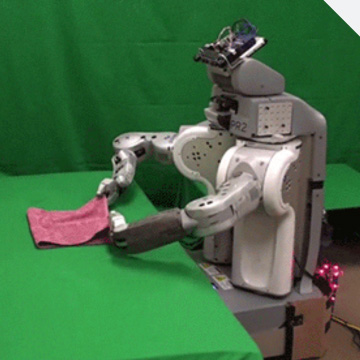
The Top 10 Fascinating Facts About Minecraft!
April 11, 2023
The Lackluster Appeal of Apple’s Vision Pro
June 18, 2023There is a growing debate around whether people are expecting too much from generative AI. Some argue that the hype around AI has created unrealistic expectations, leading to disappointment when AI fails to deliver on these promises. Others argue that AI is capable of far more than people realize, and that with continued innovation and development, it will meet or exceed expectations in the future.

Giphy.com
Challenges in producing unique and creative outputs
Generative AI has undoubtedly transformed the way in which we interact with technology. From personalizing shopping experiences to enhancing medical diagnosis, generative AI has the potential to revolutionize a range of industries. However, its ability to produce truly unique and creative outputs remains one of its primary challenges.
At its core, generative AI relies on pre-existing data to produce outputs. Machine learning algorithms analyze patterns in data and use these insights to create new content. While this approach can produce variations of pre-existing data, generating entirely new content requires a significant leap in complexity.
Generating truly original content would require AI to identify new patterns and relationships that humans have not yet recognized. This level of creativity is incredibly difficult to achieve, and it is unlikely that AI will be able to produce truly groundbreaking works in the near future.
Some argue that expectations for generative AI to create completely original content are overstated. Rather than producing groundbreaking content, generative AI can be used to identify patterns in data that help humans to make better decisions. For example, AI can be used to identify patterns in medical imaging that help doctors to diagnose rare diseases.
Overall, generative AI has tremendous potential, but its limitations must be recognized. By understanding the strengths and weaknesses of generative AI, we can develop more realistic expectations and use this technology to its full potential.
Lorem ipsum dolor sit amet, consectetur adipiscing elit, sed do eiusmod tempor incididunt ut labore et dolore magna aliqua. Ut enim ad minim veniam, quis nostrud exercitation ullamco laboris nisi ut aliquip ex ea commodo consequat. Duis aute irure dolor in reprehenderit in voluptate velit esse cillum dolore eu fugiat nulla pariatur. Excepteur sint occaecat cupidatat non proident, sunt in culpa qui officia deserunt mollit anim id est laborum.
The Promising Future, Capable of Revolutionizing Multiple Industries.
The world of artificial intelligence has come a long way since its inception. Gone are the days when AI was seen as mere science fiction. Today, AI has become an integral part of our lives, powering everything from our smartphones to our homes. With advancements in AI technology, a new branch of AI called generative AI has come into being.
Generative AI is an exciting and promising field of AI, which uses machine learning algorithms to generate new and original content, such as music, art, and literature. Unlike traditional AI, which is programmed to solve specific tasks, generative AI is designed to be creative and adaptive, which allows it to produce outputs that are unique and unpredictable.
One of the most exciting applications of generative AI is in the field of music. By training a machine learning algorithm on a large dataset of musical compositions, generative AI can create new and original pieces of music that sound as if they were composed by a human. This has vast implications for the music industry, allowing for the production of new and innovative music that breaks away from the conventional norms of the industry.
Similarly, generative AI can be used to create new and unique works of art. By analyzing and learning from a large dataset of art pieces, generative AI can create new pieces of art that are truly one-of-a-kind. This has the potential to revolutionize the way art is created, breaking away from the traditional methods of creation and opening up new avenues for artistic expression.
In the field of literature, generative AI can be used to generate new and original content, such as books and articles. By analyzing and learning from a large corpus of literature, generative AI can learn to mimic the voice and style of different authors, effectively creating new works of literature that are indistinguishable from those written by a human.
However, there are still limitations to generative AI. For example, while generative AI can create new and original content, it still lacks the emotional depth and context that is inherent in human-created art and music. Nonetheless, with continued development and improvement, it is possible that some of these limitations may be overcome.
In conclusion, generative AI is a promising and exciting development in the field of artificial intelligence. While there may be some unrealistic expectations surrounding its capabilities, there is no denying the potential for generative AI to revolutionize a wide range of fields and industries in the coming years. With further advancements in AI technology, we may witness a future where machines are not only capable of creating but inspiring us with their creativity.



